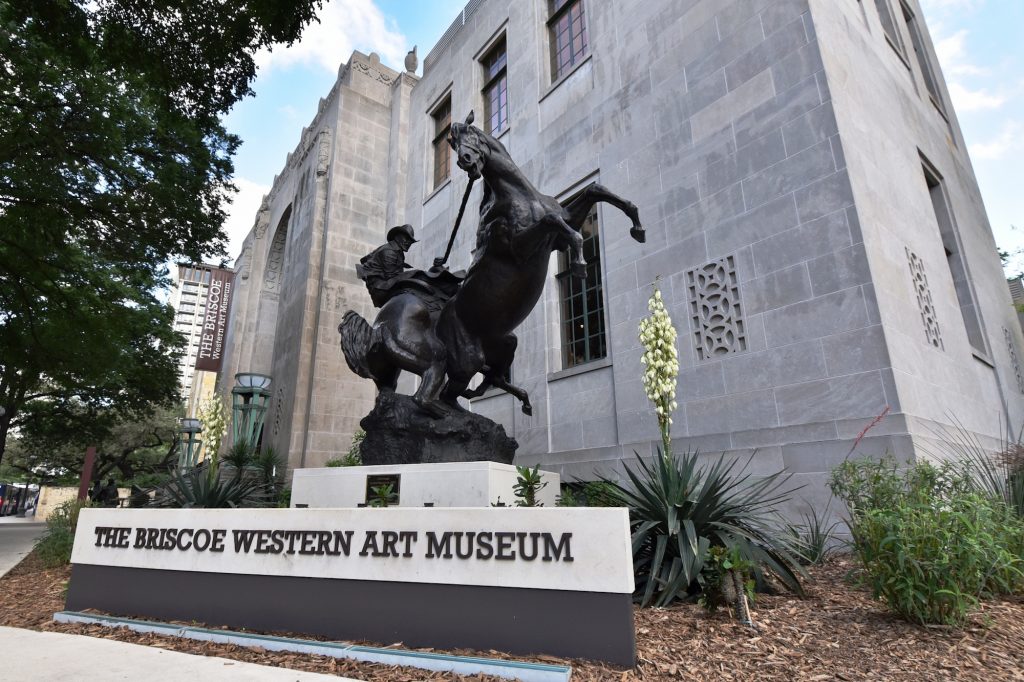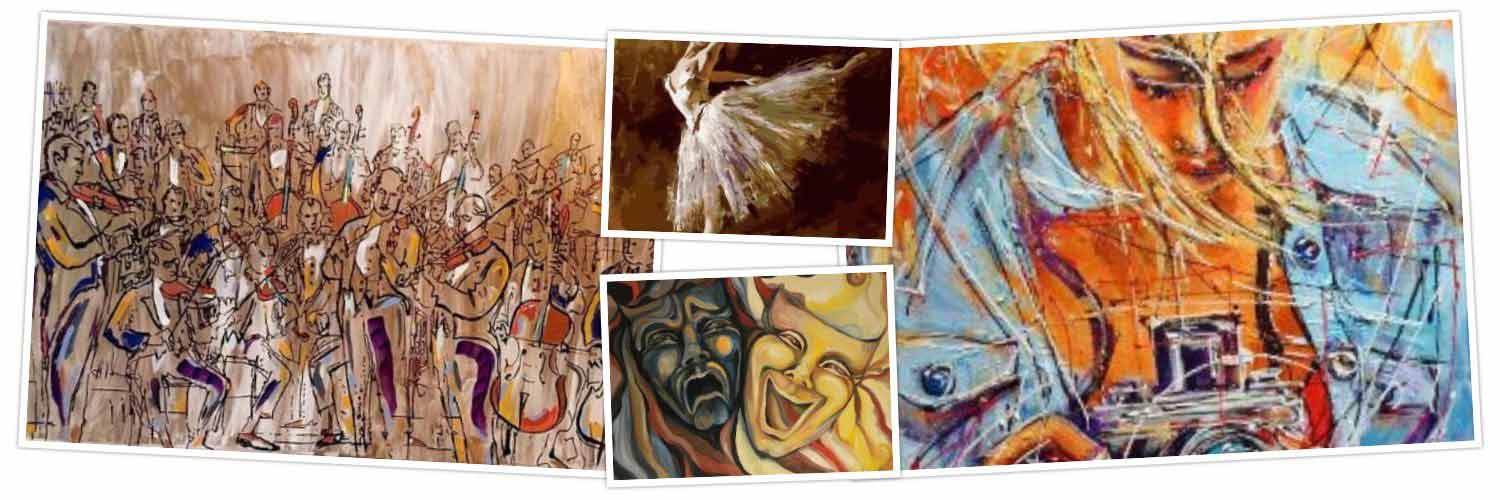Michael Duchemin- President & CEO, Briscoe Western Art Museum
By JASMINA WELLINGHOFF, Editor —
Let’s start with the most obvious question. How’s the post-lockout reopening going?
Like everywhere else, traffic is slow. We are experiencing about 25% of our normal visitation due to the pandemic. I expect that to grow slowly over the coming months. It’s going to take time.
You didn’t expect a pandemic when you took this job a few years ago, but, considering your extensive background, why did you take the job at this very young museum, which opened in 2013?
I had about 35 years of experience in Western art, history and popular culture when I decided to come here. I came to the Briscoe because of the challenge of launching a new museum. But I also found out that I liked best and enjoyed most working in smaller, medium-size museums. I spent 17 years at the Autry Museum of the American West in Los Angeles, which is a very large museum. The bigger an institution is, the less flexible and nimble it is. It becomes set in its ways. I appreciate a museum where I can have a hand in the daily operations, not just in fundraising, HR and administration. My background is as a curator. So, shaping the message, the collection and the exhibits, is my favorite part of working in a museum. And a smaller institution allows me to do that.

Tell us about the Briscoe’s collection.
The Briscoe has a relatively small collection at this point. We have about 1,200 objects and the bulk of that is a really significant photography collection, stereograph images of San Antonio from the late 19th and early 20th century. We featured those in an exhibit about a year ago called “Destino San Antonio.” We also have about 400 pieces that are on loan, that populate our permanent galleries. That’s another thing that attracted me to come here – the opportunity to develop the collection. In the time I’ve been here (over three years) we have been adding close to a $1M a year in art to our collection. So, it’s growing pretty significantly. And we are acquiring new pieces on an ongoing basis, both through purchase and donations.
Western Art collections generally revolve around four primary themes: Native American subjects; vaquero and cowboy subjects; Hispanic and Mexican American/southwest themes; and wildlife and natural landscape. Most of Western art began as a depiction of landscapes and native peoples in the early 19th century. Some of the early explorers wanted to document what they saw. From there, other themes developed.
Is Western art popular in America today?
Western art is a niche within American art. There are 20 major Western art sales a year in the U.S., with sales from $1M to $25M. There are five national journals devoted to it. And here in San Antonio, there was enough interest and support to raise the money to build the museum and keep it open. The original investment was $31M. (The museum was named in honor of former Texas governor Dolph Briscoe, Jr. and his wife Janey, who were the early visionaries and supporters of the project.)

Your major fundraiser, Night of the Artists, became a virtual exhibit and sale that went on for several months. How successful was it?
Night of Artists began 19 years ago, as an event to raise funds to build the museum. So, there’s a direct link between the event and the museum’s history. It started out as a one-night event at first. For the past few years, however, there have been opening weekend galas but the exhibits stayed on for several weeks afterwards and the sales continued. It’s true that the majority of sales happened during the opening weekend. When the pandemic came, we had to close the museum before the Night of Artists 2020 weekend. We moved the entire sale portion of the event online and we conducted the sale through a virtual platform. Last year we sold $2.1M of art; this year so far, we sold about $1M. So, we lost about half of our gross revenue compared to last year. Unfortunately, all other sources of revenue streams have dried up, too. We can’t rent our pavilion (for events), our attendance is down, our store sales are down.
Does all of that give you insomnia?
Indigestion maybe, but not insomnia! (laughs). There are only a couple of ways to resolve a situation like this and weather the storm. That’s where an endowment comes in handy and older museums are in a better position in that regard than we are. Another way is through government grants. We did get one and that helped maintain our payroll, for a couple of months anyway. And the third way is through contributions from individuals, board members and other donors… I am a good money manager and our board is very supportive.
Are you personally a collector of Western Art?
I have a small collection, 22-23 pieces. When you have art in your home, you get a dividend every day when you wake up and have your cup of coffee, and you are surrounded by beautiful things. Once you start collecting art, it’s hard to stop because it’s so rewarding.
If you could recommend one good book about Western art to someone who would like to learn about it, which one would you recommend?
The bible for all Western art collectors and scholars is a book by two brothers named Goetzmann – “The West of the Imagination.” That’s the most comprehensive source.
As a historian, which period or aspect of American history do you find especially interesting?
One of my primary areas of research is the development of tourism in Western cities and sites. One of my professors called tourism “The Devil’s bargain” because when you invite tourism into your town, it brings advantages but also disadvantages to the people who’ve lived in that town for a long time. San Antonio is a really good example of that. Because we rely so much on tourism here, we can now see that when the tourism industry is challenged, the entire economy of San Antonio is challenged. Having a more diversified economy is important.
You deal with a lot of challenging issues. What is the task that you most dislike?
Well, housecleaning and laundry are not high on my list of things to do. Over here at the museum, one of the most challenging tasks involves all the human resources requirements. It’s not exactly boring but…well, challenging.
Have you ever bought something expensive on an impulse that you regretted later?
I have bought art on impulses. I never regretted buying the art, I regretted having to pay the bills. And I recently traded a 2019 car for a 2020 one. The deals were just so good. I traded a sedan for an SUV. That was totally something I decided to do on impulse.
If we were to ask people who know you well, what they like most about you and what drives them crazy about you, what do you think they would say?
(after some reflection) One of the things that’s special about me is that I have a knack to see things before they materialize. I don’t mean premonitions, but, for example, in building a new building or setting up a new exhibit, I can imagine in advance what it will look like because I am a visual thinker. I think people appreciate that. And I try to keep my sense of humor at all times. As for the annoying part, I can be patronizing and people don’t like that.
And how would you describe yourself in a word or two?
I would say “balanced” and “compassionate.”
What was the hardest decision that you had to make in your life?
Probably when I decided to move from Wisconsin where I grew up, to Arizona in 1984. I had to leave my family and friends and strike out on my own. That was one of the most difficult moments in my life. It was difficult to leave behind everything I knew. I have not regretted it but it was hard.
Do you have a life motto/a life philosophy that you live by?
My mantra is: Approach life as if everything was entertainment. Some of it is tragedy, some of it is comedy. In the end, we are just passing through, so we may as well enjoy it.

Nice article! Thanks so much!
Nice article! Thanks so much!
Well written article. Very interesting, and concise and informative.